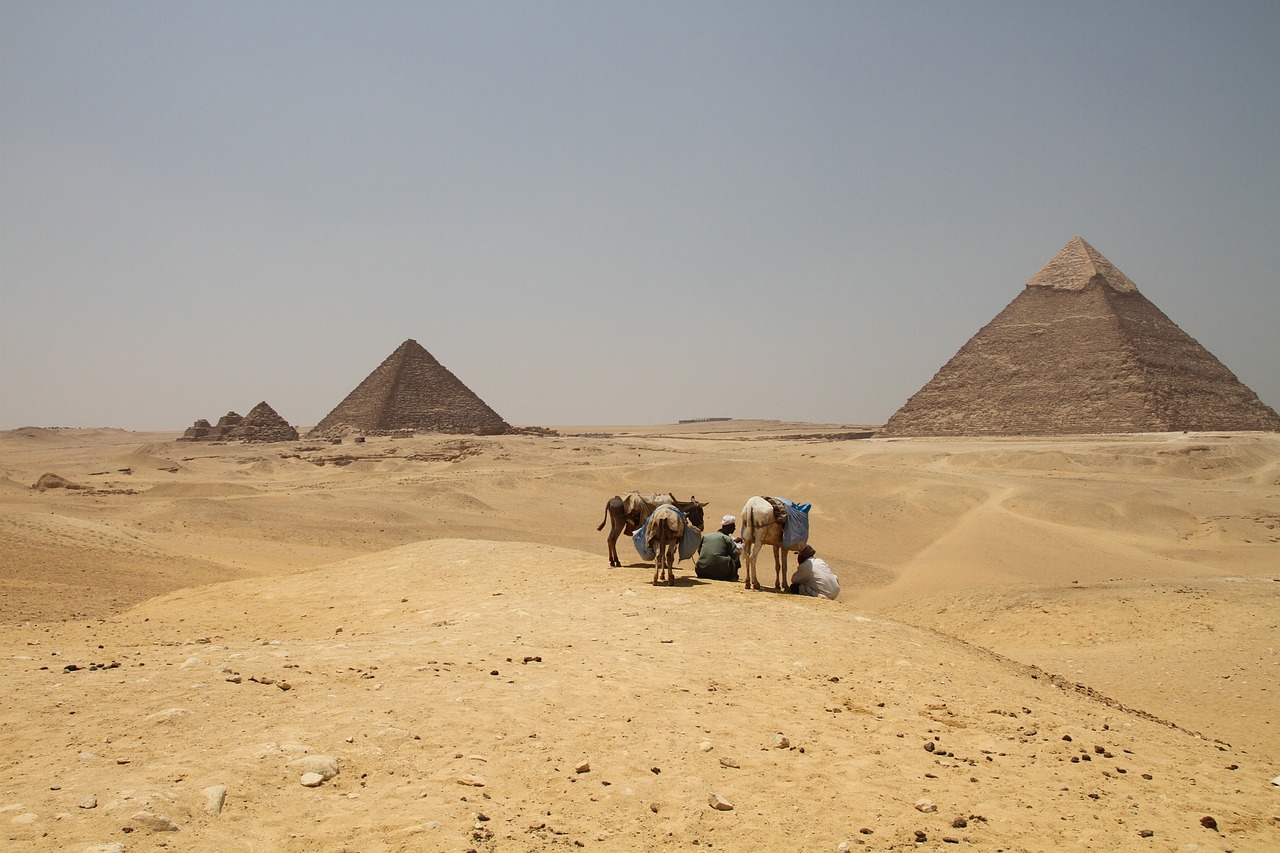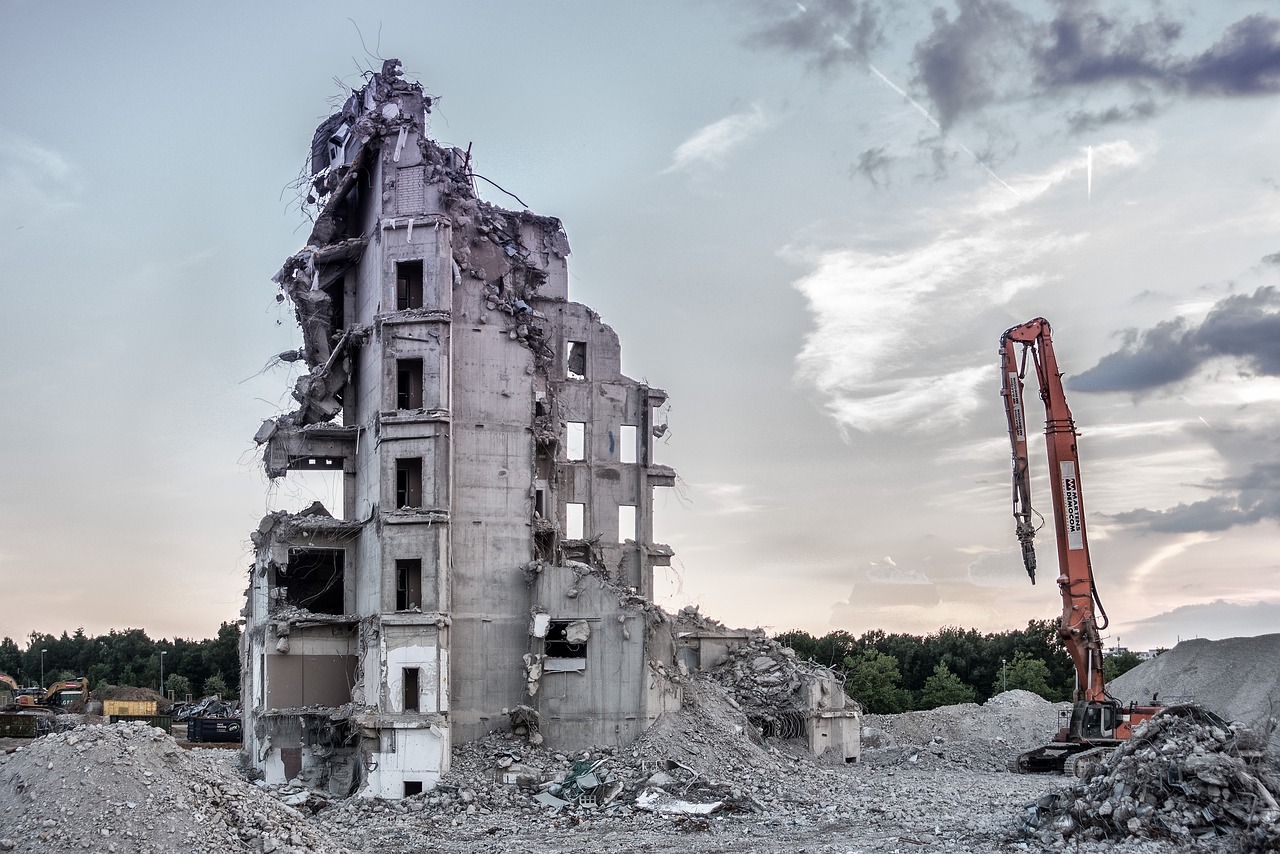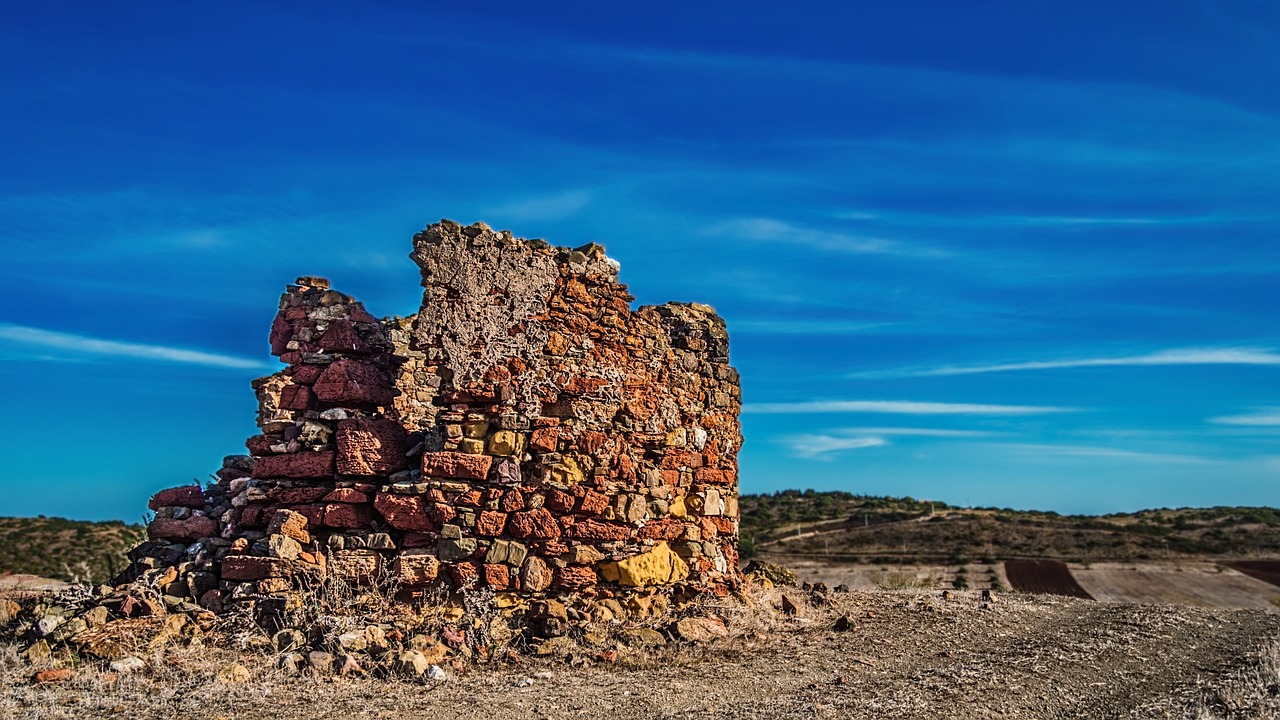The Enigma of the Lost Civilization of Tiwanaku
Tiwanaku, an ancient civilization nestled in the Andes, has long captivated historians and archaeologists with its enigmatic mysteries. The remnants of this lost civilization stand as a testament to its once-great power and influence, leaving behind a trail of unanswered questions that continue to baffle researchers to this day.

Origins and Development of Tiwanaku
Tiwanaku, nestled in the Andean region, traces its origins back to around 1500 BC, when it was a small agricultural village. Over centuries, this humble settlement blossomed into a sophisticated civilization, known for its monumental architecture and cultural achievements. The development of Tiwanaku was marked by a gradual expansion of influence, as it established trade networks with distant regions and absorbed diverse cultural influences.
As Tiwanaku flourished, it became a dominant power in the Andean highlands, with its capital city serving as a hub of religious and political activity. The civilization reached its peak between 500-900 AD, constructing impressive stone structures like the Akapana pyramid and the Sun Gate. These architectural marvels not only showcased Tiwanaku's engineering prowess but also reflected their intricate cosmology and religious beliefs.
The cultural development of Tiwanaku was not limited to architecture alone; it extended to art and iconography as well. The civilization's pottery, textiles, and sculptures were adorned with symbolic motifs that depicted their worldview and spiritual practices. These artistic expressions not only served as decorative pieces but also as a means of conveying complex narratives and beliefs.
Despite its grandeur, Tiwanaku faced challenges that ultimately led to its decline. Factors such as environmental changes, internal conflicts, and shifts in trade routes contributed to the civilization's gradual unraveling. By the 12th century, Tiwanaku had been abandoned, leaving behind a legacy shrouded in mystery and intrigue.
Today, the remnants of Tiwanaku continue to captivate archaeologists and historians, offering glimpses into a lost civilization that once thrived in the Andes. The ongoing research and excavations at the Tiwanaku site provide valuable insights into the origins, development, and eventual decline of this enigmatic culture, sparking debates and controversies among scholars seeking to unravel its secrets.

Architectural Marvels of Tiwanaku
Tiwanaku, an ancient civilization nestled in the Andes, boasts architectural marvels that continue to baffle modern minds. Among these wonders are the Akapana pyramid and the renowned Sun Gate, showcasing the advanced engineering prowess of the Tiwanaku people. The precision in the construction of these structures, using massive stone blocks fitted together with incredible accuracy, leaves archaeologists and historians in awe of the civilization's capabilities.
The Akapana pyramid, with its terraced levels and intricate design, stands as a testament to Tiwanaku's architectural ingenuity. This massive structure, believed to have served both ceremonial and astronomical purposes, reflects the civilization's deep connection to the cosmos and their sophisticated understanding of celestial movements. The Sun Gate, adorned with intricate carvings and symbols, is a masterpiece of artistic and architectural fusion, hinting at the spiritual beliefs and rituals of the Tiwanaku people.
Symbolism plays a crucial role in deciphering the purpose behind these architectural marvels. The intricate carvings and reliefs found on the structures depict mythological figures, celestial bodies, and intricate geometric patterns. These symbols not only served decorative purposes but also held deep religious and cosmological significance for the Tiwanaku civilization, offering insights into their worldview and spiritual practices.
Moreover, the alignment of these structures with celestial events and geographical features suggests a profound knowledge of astronomy and landscape among the Tiwanaku builders. The precision in orientation and design indicates a sophisticated understanding of the natural world and its interconnectedness with the spiritual realm, elevating Tiwanaku's architectural achievements to a realm of mystique and wonder.

Art and Iconography of Tiwanaku
Art and Iconography of Tiwanaku delves into the intricate world of pottery, textiles, and sculptures that defined the cultural identity of this ancient civilization. The art of Tiwanaku reflects a rich tapestry of cosmological beliefs and religious practices, offering a glimpse into the spiritual world of its people. The intricate patterns and motifs adorning their artifacts serve as a visual language, conveying stories of creation, mythology, and societal values.
One of the most iconic symbols of Tiwanaku art is the Ponce Monolith, a massive stone sculpture depicting a seated figure adorned with elaborate headdress and symbols. This imposing monolith is believed to represent a deity or a powerful ruler, showcasing the artistic prowess and reverence for divine beings within Tiwanaku society.
The pottery of Tiwanaku is equally impressive, featuring intricate geometric designs and stylized motifs that reflect the interconnectedness of the natural world and the spiritual realm. These vessels were not merely utilitarian objects but vessels of meaning, used in rituals and ceremonies to honor the gods and ancestors.
Moreover, textiles played a crucial role in Tiwanaku society, with intricate weaving techniques producing colorful and symbolic garments. The textiles were adorned with geometric patterns and zoomorphic figures, reflecting the close relationship between humans, animals, and the supernatural in Tiwanaku cosmology.
Overall, the art and iconography of Tiwanaku serve as a window into a complex and sophisticated civilization that valued creativity, symbolism, and spiritual expression. Through the study of their artistic legacy, we gain insights into the beliefs, values, and worldview of the enigmatic people who once thrived in the Andean highlands.

Trade and Influence of Tiwanaku
Trade and Influence played a pivotal role in the prosperity of the Tiwanaku civilization, establishing extensive networks that connected distant regions and facilitated the exchange of goods, ideas, and cultural practices. The strategic location of Tiwanaku, near Lake Titicaca, allowed for access to valuable resources such as agricultural products, minerals, and textiles. This abundance of resources enabled the Tiwanaku people to engage in far-reaching trade routes that extended across the Andean region and beyond.
Through their trade networks, the Tiwanaku civilization not only acquired valuable commodities but also disseminated their cultural influence to surrounding regions. The exchange of goods fostered economic growth and cultural exchange, leading to the integration of diverse traditions and practices within Tiwanaku society. The intricate textiles, ceramics, and metalwork produced by the Tiwanaku artisans became highly sought after, further enhancing their influence in the region.
Moreover, the trade relationships established by the Tiwanaku civilization played a crucial role in shaping the political landscape of the Andean region. The alliances forged through commerce strengthened diplomatic ties and promoted cooperation among neighboring societies. The wealth generated through trade contributed to the consolidation of power and the expansion of Tiwanaku's influence, solidifying its position as a dominant force in the pre-Columbian Andes.

Decline and Abandonment of Tiwanaku
After centuries of prosperity and cultural flourishing, the once-mighty civilization of Tiwanaku faced a gradual decline that ultimately led to its mysterious abandonment. Scholars and archaeologists have long debated the factors that contributed to the downfall of this enigmatic society, with various theories attempting to unravel the enigma of Tiwanaku's demise.
One of the key factors believed to have played a role in the decline of Tiwanaku was environmental challenges. The region faced fluctuations in climate and agricultural productivity, which may have strained the resources of the civilization. Additionally, internal unrest and social upheaval likely contributed to the weakening of Tiwanaku's political and social structures.
As Tiwanaku's influence waned, its once-thriving trade networks began to falter, further isolating the civilization from external resources and allies. The loss of trade connections may have exacerbated the economic and political pressures facing Tiwanaku, hastening its decline.
The abandonment of Tiwanaku remains a subject of speculation and intrigue, with no definitive explanation for why the civilization was ultimately deserted. Some theories suggest that a catastrophic event, such as a natural disaster or epidemic, may have precipitated the sudden exodus of the population from the city.
Despite the enduring mysteries surrounding the decline and abandonment of Tiwanaku, the remnants of this ancient civilization continue to captivate researchers and visitors alike. The enigma of Tiwanaku serves as a reminder of the fragility of even the most powerful empires and the impermanence of human endeavors.

Legacy of Tiwanaku in Modern Times
The legacy of Tiwanaku continues to cast a long shadow over modern Andean cultures and archaeological research, serving as a reminder of the enigmatic civilization that once thrived in the region. The cultural influence of Tiwanaku can be seen in the artistic traditions, architectural styles, and religious practices of contemporary Andean societies, showcasing the enduring impact of this ancient civilization.
Archaeological research and preservation efforts have sought to unravel the mysteries of Tiwanaku, shedding light on its technological advancements, societal organization, and spiritual beliefs. The iconic stone structures and intricate artworks of Tiwanaku serve as a testament to the creativity and ingenuity of its people, inspiring awe and fascination in researchers and visitors alike.
Modern interpretations of Tiwanaku's legacy often highlight its role as a cultural bridge between past and present, connecting modern Andean communities to their ancestral heritage. By studying the artifacts and monuments left behind by the Tiwanaku civilization, archaeologists and historians gain valuable insights into the complexities of ancient Andean societies and the challenges they faced.
Contemporary debates surrounding Tiwanaku's legacy revolve around issues of cultural appropriation, heritage preservation, and indigenous rights. As researchers strive to uncover the truth behind the enigmatic civilization of Tiwanaku, they also grapple with ethical considerations and the need to respect the beliefs and traditions of present-day Andean peoples.

Rediscovery and Archaeological Excavations
Rediscovery and Archaeological Excavations of Tiwanaku have been instrumental in uncovering the mysteries of this ancient civilization. In the 19th century, explorers and archaeologists stumbled upon the ruins of Tiwanaku, sparking a renewed interest in understanding the enigmatic culture that once thrived in the Andes.
Archaeological excavations at the Tiwanaku site have revealed a wealth of information about the civilization's architectural prowess, artistic achievements, and societal structure. Researchers have meticulously unearthed artifacts, temples, and residential complexes, providing valuable insights into the daily lives of the Tiwanaku people.
One of the most significant discoveries at Tiwanaku is the intricate stone carvings and monolithic structures that showcase the advanced engineering skills of the ancient civilization. The Sun Gate, with its intricate iconography and astronomical alignments, has baffled scholars and visitors alike, hinting at the sophisticated knowledge and beliefs of the Tiwanaku culture.
Moreover, ongoing research and excavations continue to shed light on the trade networks, religious practices, and agricultural techniques of Tiwanaku. By piecing together fragments of pottery, textiles, and tools, archaeologists are unraveling the complex web of connections that sustained the thriving civilization for centuries.
Through the meticulous study of artifacts and architectural remains, archaeologists are slowly reconstructing the grandeur and complexity of Tiwanaku society. Each excavation uncovers new clues and raises fresh questions, fueling the fascination and intrigue surrounding this lost civilization.

Theories and Controversies Surrounding Tiwanaku
Delve into the various theories proposed by scholars to explain the mysteries of Tiwanaku, from astronomical alignments to ritual practices. One prevalent theory suggests that the layout of Tiwanaku's architectural structures aligns with significant astronomical events, indicating a sophisticated understanding of celestial movements. This alignment has sparked debates among researchers about the purpose behind these celestial connections and their role in Tiwanaku society.
Another controversial aspect of Tiwanaku revolves around its ritual practices and religious beliefs. Some scholars argue that the elaborate iconography found in Tiwanaku art reflects a complex cosmology and a pantheon of deities worshipped by the civilization. However, the interpretation of these symbols remains a subject of contention, with differing views on the meaning and significance of the religious imagery.
One intriguing theory proposes that Tiwanaku's decline was precipitated by a cataclysmic event, such as a natural disaster or a sudden environmental change. This theory suggests that a significant disruption to the civilization's resources or infrastructure led to its downfall, leaving behind the enigmatic ruins that puzzle archaeologists to this day.
Furthermore, debates continue regarding the extent of Tiwanaku's influence on neighboring cultures and the nature of its interactions with other contemporary civilizations. Some researchers argue for a dominant and expansive Tiwanaku empire that exerted significant cultural and political influence, while others propose a more nuanced view of Tiwanaku as a regional power with complex relationships with surrounding societies.
Frequently Asked Questions
- What is the significance of Tiwanaku in ancient history?
Tiwanaku was a prominent ancient civilization located in the Andes region, known for its advanced engineering, cultural achievements, and influence on surrounding civilizations. The significance of Tiwanaku lies in its architectural marvels, intricate art and iconography, extensive trade networks, and enduring mysteries that continue to fascinate historians and archaeologists.
- How did Tiwanaku influence modern Andean cultures?
The legacy of Tiwanaku has had a lasting impact on modern Andean cultures, influencing art, architecture, and religious practices. Contemporary Andean societies draw inspiration from Tiwanaku's cosmology, symbolism, and technological advancements, showcasing the enduring relevance of this ancient civilization in the present day.
- What led to the decline and abandonment of Tiwanaku?
The decline of Tiwanaku was attributed to various factors, including environmental challenges, internal unrest, and disruptions in trade networks. These issues, combined with possible social and political upheaval, eventually led to the abandonment of the once-thriving civilization, leaving behind a legacy of enigmatic ruins and unanswered questions.



















